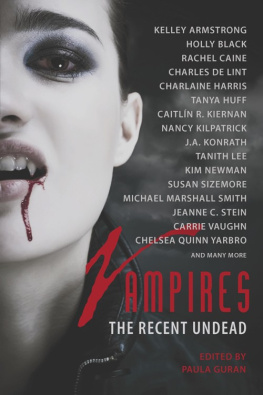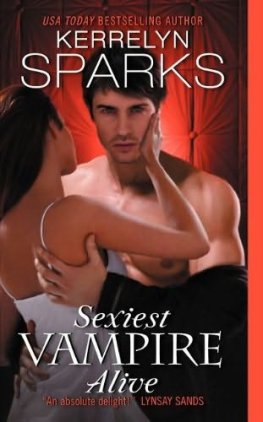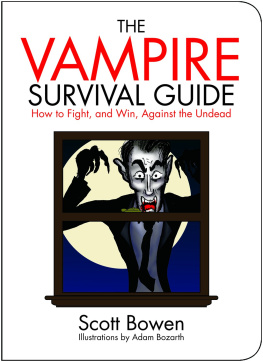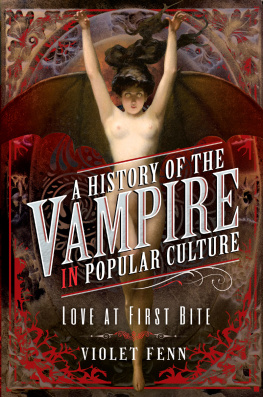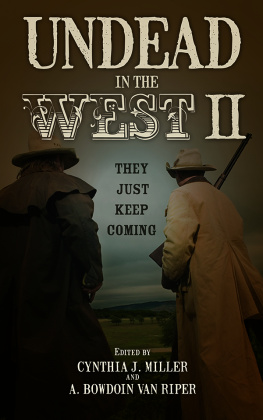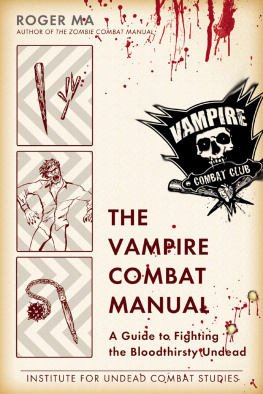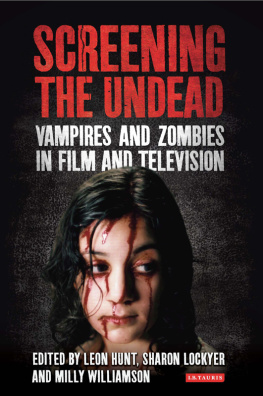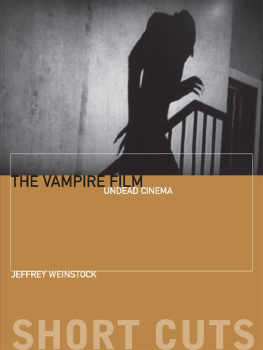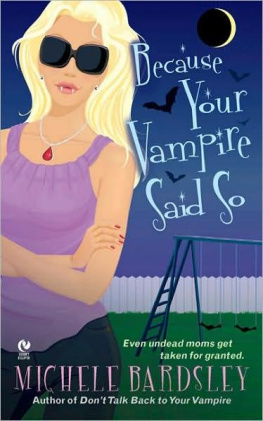VAMPIRES:
The Recent Undead
Edited by
Paula Guran
To Chelsea Quinn Yarbro:
A woman to whom many who write (or read) vampire fiction owe more than they may realize.

Copyright 2011 by Paula Guran.
Cover art by Szabo Balaz.
Cover design by Stephen H. Segal.
Ebook design by Neil Clarke.
ISBN: 978-1-60701-298-6 (ebook)
ISBN: 978-1-60701-254-2 (trade paperback)
All stories are copyrighted to their respective authors,and used here with their permission.
PRIME BOOKS
www.prime-books.com
No portion of this book may be reproduced by any means, mechanical, electronic, or otherwise, without first obtaining the permission of the copyright holder.
For more information, contact Prime Books.
Contents
by Paula Guran
by Holly Black
by Michael Marshall Smith
by Charles de Lint
by J.A. Konrath
by Kelley Armstrong
by Tanith Lee
by Rachel Caine
by Jeanne C. Stein
by Stephen Dedman
by Chelsea Quinn Yarbro
by Tanya Huff
by Conrad Williams
by Susan Sizemore
by Tina Rath
by Mary Turzillo
by Carrie Vaughn
by Barbara Roden
by Charlaine Harris
by Caitln R. Kiernan
by Albert Cowdrey
by Nisi Shawl
by Kim Newman
by Karen Russell
by Nancy Kilpatrick
by John Langan
Introduction
... every age embraces the vampire it needs.
Nina Auerbach
The year 2010 may have marked a new high point in the popularity of the vampire. Although Stephenie Myers Twilight series (books and film), Charlaine Harriss Southern Vampire Mystery series and its HBO incarnation as True Blood , and the Vampire Diaries television series (based on L.J. Smiths young adult series of the same name from the nineties) all began earlier in the decade, their popularity hit blood-fever pitch in 2010. Films like Daybreakers and Let Me In (the American remake of Swedish film Let the Right One In based on John Ajvide Lindqvists novel Lt den rtte komma ) also made an impact. In the UK, even Doctor Who featured vampire-like creatures in an episode titled Vampires in Venice. The Brits also enjoyed the second Being Human seriesfeaturing a vampire living with a ghost and a werewolfon BBC Three.
As for vampire fiction not (yet) on TV or film, it ranged from the literary horror of The Passage by Justin Cronin to a bevy of best-selling urban fantasy and paranormal romance titles and series for both adult and young adult readers, There were childrens books as well (including Dick and Jane and Vampires ). The final two books of Gail Carrigers Parasol Protectorate trilogy featured a Victorian vampire slayer while Seth Grahame-Smith mashed up the Great Emancipator with fangsters in Abraham Lincoln: Vampire Hunter.
Vampires were inescapable.
Hundreds of thousands of words have been written about vampires, our fascination with them, and their meaning and place in our culture. If you want in-depth information, either scholarly or written for popular consumption, theres plenty available. The focus of this anthology is short vampire fiction published 2000-2010, but lets take a quick sip of the bloody background for context.
The idea of the vampire has probably been around since humanity first began to ponder death. In Western culture the vampire has been a pervasive icon for more than two centuries now, but the image of the vampire as something other than a disgusting reanimated corpse was profoundly reshaped in the early nineteenth century by a group of British aristocrats.
Mary Wollstonecraft Godwin, Percy Shelley, Matthew Lewis, Lord Byron, and Byrons physician, Dr. John Polidori, decided to amuse themselves one damp summer 1816 evening in a villa on Lake Geneva by writing ghost stories. Mary Godwin (who later married Shelley) created a modern myth (and science fiction) with Frankenstein, or Prometheus Unbound . Polidori picked up a fragment written by Byron and produced a story based on it: The Vampyre. It featured Lord Ruthven, a seductive refined noble as well as a blood-sucking monster who preyed on others. The character was obviously based on the already notorious Byron himself.
The Vampyre became wildly popular, particularly in Germany and France. The theatres of Paris were filled by the early 1820s with vampire-themed plays. Some of these returned to England in translated form.
As Brian Stableford has written, The Vampyre was the most widely read vampire story of its era... To say that it was influential is something of an understatement; there was probably no one in England or France who attempted to write a vampire story in the nineteenth century who was not familiar with it, one way or another. Poldoris story was certainly the inspiration for the serialized penny dreadful Varney the Vampire or, The Feast of Blood (1845-47) by (most likely) James Malcolm Rhymer. Varney appealed to the masses, but was of even less literary merit than the short story to which it owed so much.
It took Sheridan le Fanu to craft a true literary gem with his novella Carmilla, published in 1872. The tale of a lonely girl and a beautiful aristocratic female vampire in an isolated castle also brought steamy (albeit lesbian) sexuality into the vampire mythos.
But it was Bram Stokers novel Dracula (1897) that became the basis of modern vampire lore: Dracula was a vampire king of indefinite lifespan who could not be seen in mirrors, had an affinity to bats and aversions to crucifixes and garlic. He had superhuman strength, could shapeshift and control human minds. Stokers vampires needed their native soil and the best way to kill one was with a stake through the heart followed by decapitation. There were humans who, like Abraham Van Helsing, hunted vampires... etc.
Not that Stokers Count Dracula was originally all that he came to be. Stoker described him as a tall old man with a long white moustache, and clad in black from head to foot, without a single speck of colour about him anywhere. The Counts eyebrows were very massive, almost meeting over the nose and there were hairs in the center of his palms. He also had bad breath.
True cultural permeationand refinement of the Dracula archetypecame through later stage and screen adaptations. The silent film Nosferau (1922), for instance, took Draculas nocturnal nature and turned it into the inability to survive sunlight. Bela Lugosis portrayal (first on stage then, in 1931, on screen) of a suave foreign aristocrat in evening attire who seduced beautiful young women and slept in a coffin had much to do with the popular image of the count.
Various vampiric attributes and powers were added or subtracted in films and short stories in the decades thereafter. (Along with other innovations, Christopher Lees Dracula showed fang for the first time in 1958.) But although the vampire thrived in those two media, no truly notable vampire novels were published until 1954 when Richard Matheson contributed the idea of vampirism as an infectious disease with apocalyptic consequence in his novel I Am Legend.
Other novels from the 1960s also added embellishments to the icon, but in the 1970s the image of the vampire changed radically. Fred Saberhagens The Dracula Tape (1975) presented a sympathetic Dracula telling his own story. Stephen King downplayed vampiric eroticism, upped the level of terror, and focused on the vampire as a metaphor of corrupt power in his 1975 vampire novel Salems Lot (1975). Anne Rice introduced a vampire with a conscience who needed others of his kind, in Interview With the Vampire (1976). King and Rice brought the vampire fully into the cultural mainstream.
Less well-known to the public, but highly influential, Chelsea Quinn Yarbro began her series featuring the first truly romantic and heroic vampire, the Count Saint-Germain, with Htel Transylvania in 1978.
Next page
